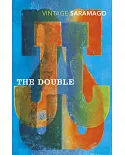he Drowned Muse is the study of the extraordinary destiny, in the history of European culture, of an object which could, at first glance, seem quite ordinary. It tells the story of a mask, the
cast of a young girl’s face entitled "L’Inconnue de la Seine," the Unknown Woman of the Seine, and its subsequent metamorphoses as a cultural figure. "L’Inconnue" names the death mask of a girl
who supposedly drowned herself in Paris at the end of the nineteenth century. Legend has it that the forensic scientist tending to the corpse awaiting identification on a block of ice at the
Paris Morgue, was so struck by her allure that he captured in plaster the contours of her face. The unknown girl, also called "The Mona Lisa of Suicide", has become the object of an obsessive
interest that started in the late 1890s, reached its peak in the 1930s and continues to reverberate today.
Aby Warburg defines art history as "a ghost story for grown-ups." This study is simlarly "a ghost story for grown-ups", narrating the aura of a cultural object that crosses epochs,
geographical, and linguistic frontiers. It views the "Inconnue" as a symptomatic expression of a modern world haunted by the earlier modernity of the nineteenth century. It investigates how the
mask’s metamorphoses track the main shifts in the cultural history of the last two centuries, and how they constitute points of negotiation through which to understand modernity. The "Inconnue"
is approached as a point of entry to understand a phenomenon most characteristic of 20th and 21st modernity: the translatability of media.





















